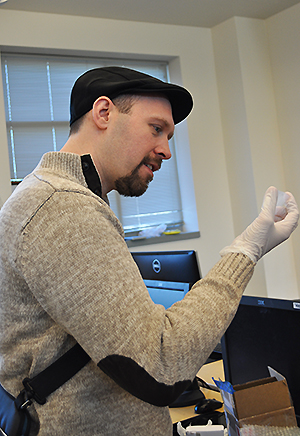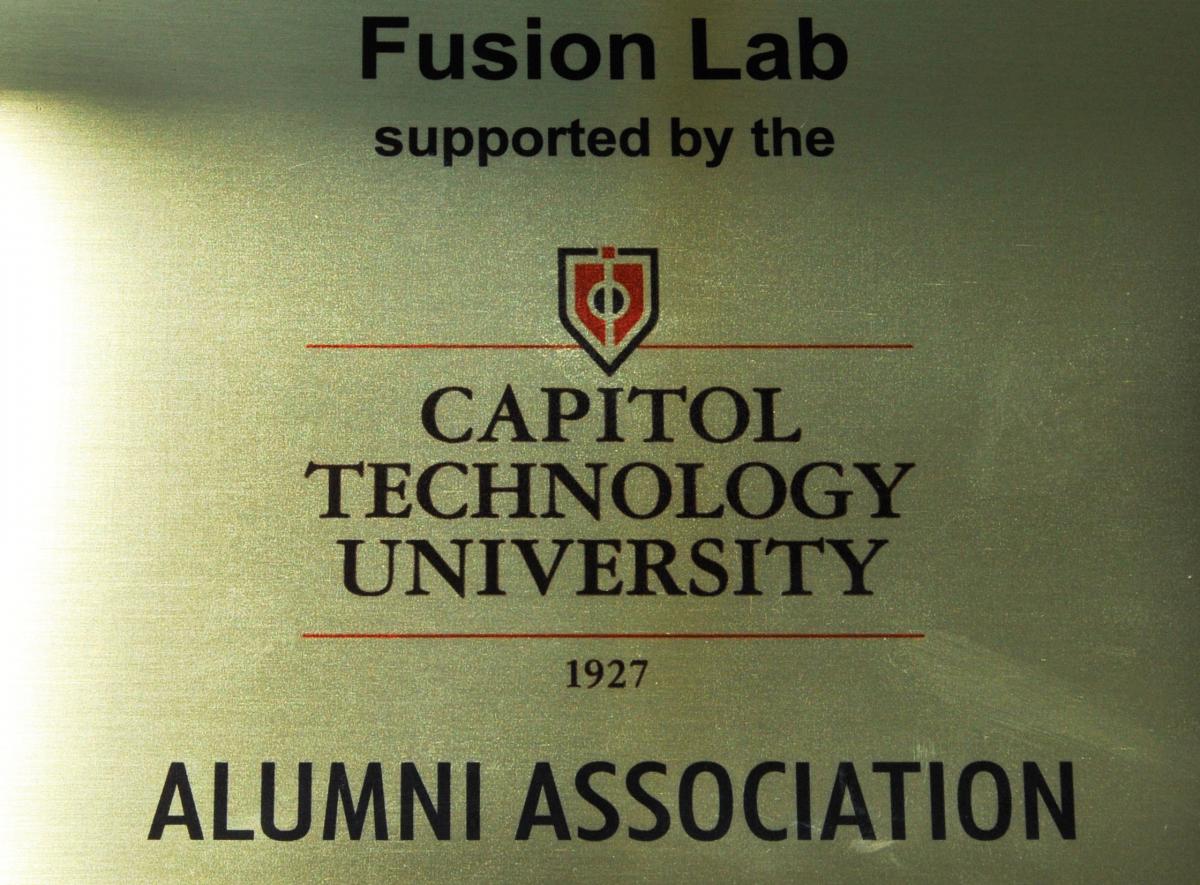It’s hard to not to feel a sense of excitement when visiting Room M-204 of the McGowan Center at Capitol Technology University. There’s always something going on: students experimenting with cubesats and rockets, tinkering with Arduinos, holding team meetings, or manning the ham radio station in the corner.
The room is home to the Fusion Lab, a unique facility that provides a space for student-led astronautical engineering projects. Currently, these include TRAPSat, an endeavor aimed at capturing space debris with the help of aerogel, and Hermes, which is developing a mobile device-based command system for satellites.
 Student organizations such as the Model Rocketry Club, the Capitol Balloon Experiment Crew, and VelcroSat also make use of the space.
Student organizations such as the Model Rocketry Club, the Capitol Balloon Experiment Crew, and VelcroSat also make use of the space.
Recently, representatives of Capitol’s Alumni Association toured the lab, eager to get a first-hand look at the projects in process. They were enthralled.
“When I toured the Fusion Lab, I was very impressed with the project one of the groups was working on,” says Ken Kassing, vice-president of the Alumni Council, which is the Association’s presiding body. “They were running it just like you would expect in the real world, and the work was not being driven by class requirements. This is very good experience for a student to have when seeking a job.”
Now, in a move designed to support further development of the lab and the purchase of needed equipment, the Alumni Association has become an official sponsor.
Alumni sponsorship “will help student projects,” explained Dr. Angela Walters, chair of the AE program at Capitol. “Alumni donations have helped us secure the funding for a better 3-D printer, and we were able to order it. That will facilitate better designs for projects, more innovation.
Additional plans in the works include upgraded furniture and storage spaces, as well as a new computer.
“We asked the students to determine what type of furniture was needed, shelves and so forth. The clubs or organizations need cabinets; the balloon experiment crew needs a lockable cabinet for their equipment. We’re also looking at getting a Mac computer.”
“Real-world” processes used to allocate funds
Deciding how to utilize the funds is providing “teachable moments” for students, Walters said. The lab managers conducted a trade study, using systems engineering principles, in order to identify the most suitable printer, starting with 27 and narrowing the choices down to three.
 “It’s the same sort of process that happens in the real world when organizations make purchasing decisions,” Walters said. “You don’t just say ‘okay, we want this.’ You have to justify it. You have to identify your criteria for the purchase.”
“It’s the same sort of process that happens in the real world when organizations make purchasing decisions,” Walters said. “You don’t just say ‘okay, we want this.’ You have to justify it. You have to identify your criteria for the purchase.”
Previously dubbed the Astronautical Research Lab, the facility has since been renamed in order to highlight its interdisciplinary character. Hermes, TRAPSat and other projects have a cybersecurity component in addition to their AE systems engineering focus, and the teams also include business students who can help with communications and promotion – just as in most companies or organizations.
“The purpose of the lab can be summed up in two words: multipurpose and multidisciplinary,” Walters said.
Anthony Lacilla, one of two student managers at the Fusion Lab, expressed gratitude to the Alumni Council for their sponsorship.
“It means so much," Lacilla said. “It not only increases our funding but our connection to the community and how we’re able to help the people who pass through here. And that’s the whole point.”


